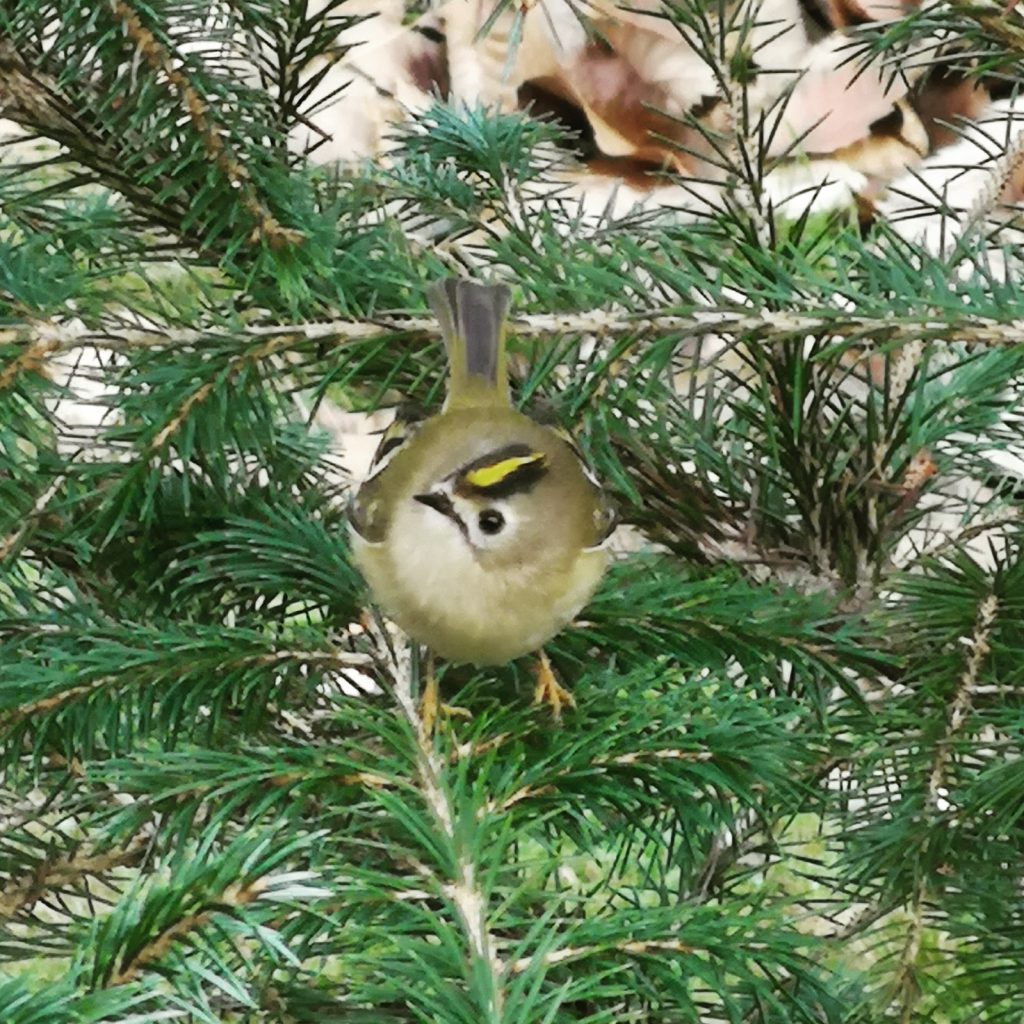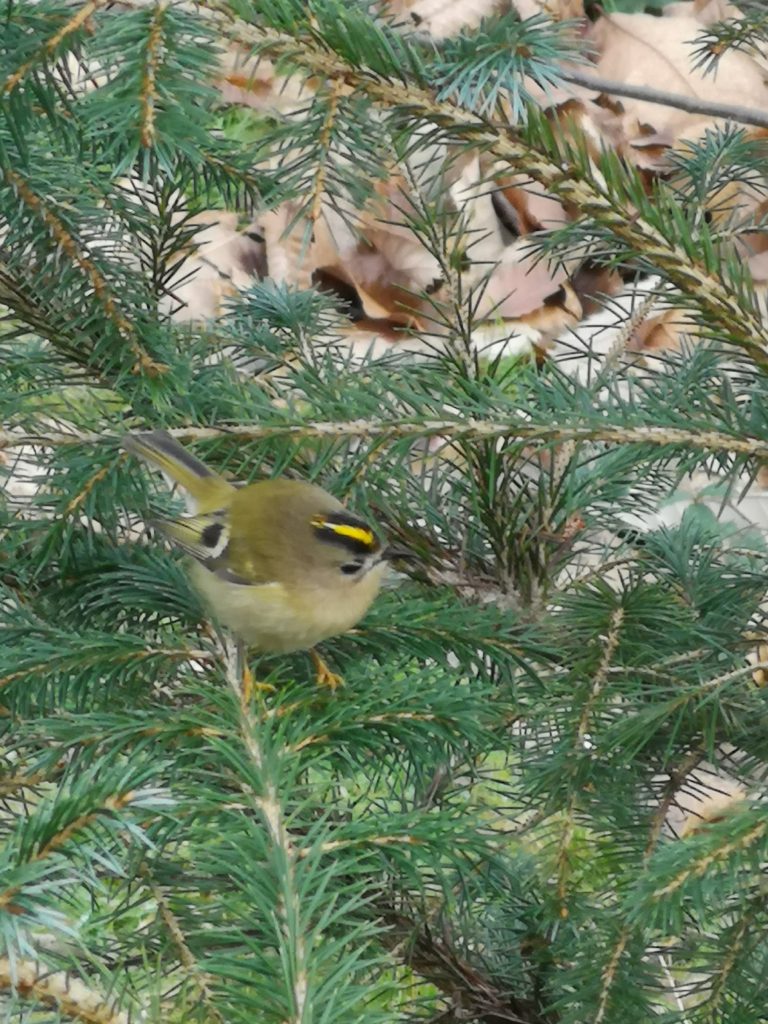The Goldcrest
our species and plans (5)
The Goldcrest Regulus Regulus.
Status: secure.
Habitat: quite common in conifer and mixed woodlands. This small bird can also be seen in gardens, parks, hedgerows and scrub.
Statistics: The Goldcrest is Europe’s smallest bird. A length of 8.5cm to 9cm and weighing only 5 to 7 grams. Socially a solitary bird with a lifespan of around 3 years.

Identification: Dull to bright olive-green plumage with a black stripe and yellow crown on the head. A broad white “V” shaped bar on the wings. Can be confused with the Firecrest which has a white supercilium (eye stripe). Voice is a thin high pitched see-see-seee.
Behaviour: The Goldcrest can be seen flitting around on lower branches often oblivious to human presence. Breeds in most of Europe except Iceland, extreme N Scandinavia and much of the Mediterranean. It builds a cute little nest comprising of cobwebs, moss and lichen. Generally two broods of 7 or 8 eggs between April and July. Can be seen all year round, feeds on tiny insects, spiders and insect eggs. When foraging for food you will often see them hovering very briefly.

Habitat plans: although we are removing a considerable amount of Sitka we will be retaining areas for species such as the Siskin and Goldcrest. However this bird is not solely reliant on spruce woodlands and frequents a wide variety of habitats. Having said that we have planted Scots Pine and Juniper this year.



